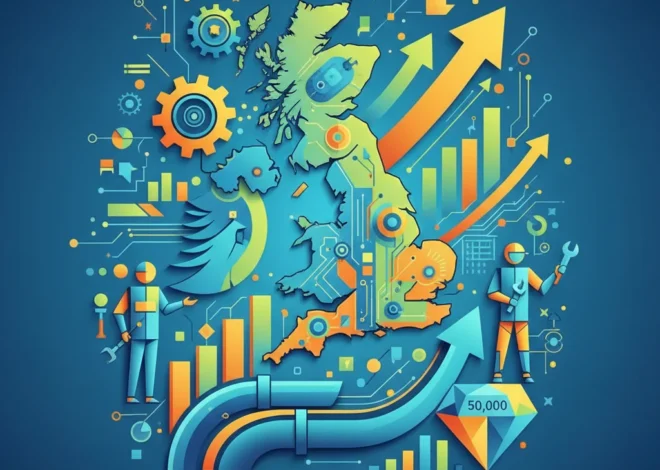
The Dragon and the Eagle Reconvene: Why the Trump-Xi Summit Will Define the Next Decade of Global Finance
A High-Stakes Handshake: Unpacking the Global Economic Implications of the Trump-Xi Meeting
In a development sending ripples through the global financial community, the White House has confirmed that President Trump will hold a face-to-face meeting with Chinese President Xi Jinping in South Korea. This summit marks their first direct engagement since Trump’s return to the presidency, setting the stage for a pivotal moment in international relations and, more critically, for the future of the global economy. While the diplomatic niceties will capture headlines, for investors, finance professionals, and business leaders, the true substance lies in the subtext—the future of trade, technology, and capital flows between the world’s two largest economic superpowers. This is not merely a political event; it is a stress test for the entire framework of global finance.
The relationship between Washington and Beijing has long been the central axis upon which global economic stability pivots. The previous Trump administration was defined by a contentious trade war that introduced unprecedented volatility into the stock market and forced a fundamental rethinking of global supply chains. As the two leaders prepare to meet again, the stakes are arguably higher. The world has been reshaped by a pandemic, inflationary pressures, and rapid advancements in areas like financial technology. The outcome of this summit could either usher in a new era of pragmatic cooperation or reignite a conflict that could derail a fragile economic recovery. For anyone involved in investing, understanding the potential fault lines and opportunities is no longer optional—it is essential.
Rewinding the Tape: The Economic Scars of the Last Trade War
To fully grasp the significance of the upcoming meeting, we must first look back. The 2018-2019 period was characterized by a tit-for-tat tariff escalation that impacted hundreds of billions of dollars in goods. The core thesis of the Trump administration was that tariffs would correct long-standing trade imbalances and protect American industries. The reality was far more complex.
The conflict began in earnest in July 2018, with the U.S. imposing tariffs on $34 billion of Chinese goods, prompting immediate retaliation from Beijing. By the end of the cycle, the U.S. had levied tariffs on over $360 billion worth of Chinese imports, while China had countered with tariffs on over $110 billion of U.S. products, according to analysis from the Peterson Institute for International Economics. This aggressive strategy disrupted decades of economic integration, sending shockwaves through sectors from technology and manufacturing to agriculture.
The impact on the stock market was palpable. Market volatility, as measured by the VIX index, spiked during key announcements of new tariffs. Companies heavily reliant on Chinese manufacturing or consumers saw their valuations plummet. The uncertainty made long-term capital planning a nightmare for CFOs and created a challenging environment for trading desks, where algorithms had to be recalibrated to account for geopolitical risk. The “Phase One” deal, signed in January 2020, was intended as a truce, but its promises of massive Chinese purchases of U.S. goods largely failed to materialize, leaving the core issues unresolved.
London's Blueprint for a Building Boom: What Planning Reform Means for the UK Economy and Investors
The New Battlefield: From Tariffs to Technology
While tariffs on goods like steel and soybeans dominated the last round of talks, the landscape has evolved. Today, the primary arena of competition is technology. The conversation has shifted to semiconductors, artificial intelligence, 5G, and the digital infrastructure that underpins the modern economy. This includes the burgeoning world of fintech and blockchain, where global standards for digital currencies and cross-border payments are being forged.
Below is a snapshot of the two economic giants as they stand today, highlighting the immense scale of their intertwined relationship.
| Indicator | United States | China |
|---|---|---|
| Nominal GDP | ~$26.95 Trillion | ~$17.70 Trillion |
| GDP Growth Rate (Annual %) | 2.5% | 5.2% |
| Goods & Services Exports | ~$3.01 Trillion | ~$3.71 Trillion |
| Goods & Services Imports | ~$3.82 Trillion | ~$3.06 Trillion |
| Trade Balance with the World | -$810 Billion | +$650 Billion |
| Source: Data compiled from The World Bank and national statistical agencies. | ||
These numbers illustrate the symbiotic, yet competitive, nature of the relationship. The U.S. remains the world’s largest consumer market, while China is the manufacturing powerhouse. A decoupling, even a partial one, would have profound consequences for global inflation, corporate earnings, and the very structure of international banking and finance.
The Agenda: What’s on the Table and Why It Matters for Your Portfolio
As Trump and Xi sit down, several critical issues will likely dominate the conversation, each with direct implications for the world of investing and economics.
1. Tariffs and Trade Balances
The existing tariffs from the first Trump administration remain largely in place. A key question is whether they will be used as a bargaining chip. A mutual rollback could trigger a relief rally in the stock market, particularly for import-heavy retail and manufacturing sectors. Conversely, a threat of new tariffs could reintroduce the volatility that plagued markets from 2018 to 2020.
2. Technology and Intellectual Property
This is the most contentious issue. The U.S. has implemented stringent export controls on advanced semiconductors and related technology to China, citing national security concerns. China views these measures as an attempt to stifle its economic ascent. Any escalation in this “tech war” would be detrimental to global tech giants, while a surprise de-escalation could send semiconductor stocks soaring. This is a critical area for anyone invested in the technology sector or related ETFs. A recent report from the Center for Strategic and International Studies (CSIS) highlights how these controls are designed to create “choke points” in China’s tech development.
Beyond the Pint: An Investor's Analysis of the Pub Industry's Economic Crossroads
3. Market Access and Financial Services
For decades, U.S. firms in the banking and finance sectors have sought greater access to China’s vast domestic market. While some progress has been made, significant barriers remain. A breakthrough here could be a major boon for American financial institutions. On the flip side, Chinese firms, particularly in the fintech space, face intense scrutiny and regulatory hurdles in the U.S. The reciprocity of market access will be a key negotiation point.
4. Global Economic Stability
Beyond bilateral issues, the two leaders must address their roles in the broader global economy. Topics like sovereign debt restructuring for developing nations, coordination on monetary policy to fight inflation, and ensuring the stability of the global banking system are all on the table. A coordinated approach would be a powerful positive signal to markets; a failure to align could amplify global economic uncertainty.
An Investor’s Playbook: Navigating the Potential Outcomes
For investors and business leaders, the summit presents a spectrum of possibilities, each requiring a different strategic response.
- The Bull Case (Cooperative De-escalation): If the meeting results in a joint statement of cooperation, a plan to roll back tariffs, and a framework for managing tech competition, markets would likely react with a significant “risk-on” rally. Cyclical stocks, emerging markets, and technology sectors would benefit most. This outcome would reduce uncertainty, potentially lowering inflation and giving the Federal Reserve more flexibility.
- The Bear Case (Renewed Hostility): A public breakdown in talks or an announcement of new tariffs would be a worst-case scenario. This would trigger a flight to safety, with investors flocking to U.S. Treasuries, the dollar, and gold. The stock market would likely see a sharp sell-off, and global growth forecasts would be revised downwards. Supply chain diversification would become the number one priority for businesses.
- The Base Case (A Cautious Truce): The most probable outcome is a continuation of the status quo with a commitment to keep lines of communication open. This would result in a muted market reaction. The meeting would be seen as a successful de-risking event, but the underlying tensions would remain. In this scenario, investors should continue to focus on quality companies with strong balance sheets and resilient business models capable of weathering ongoing geopolitical uncertainty.
The Trillion-Dollar Shift: How a Rare Earth 'Quake' is Redefining Global Finance and Technology
Regardless of the outcome, the meeting is a stark reminder that in today’s interconnected world, geopolitics and economics are two sides of the same coin. The decisions made in that room in South Korea will not stay there; they will echo in boardrooms, on trading floors, and in the portfolios of millions of investors around the globe. The world is watching.


